Nuacht
Agallamh: Jay Baruchel ar Uafás, Slashers agus 'Random Acts of Violence'
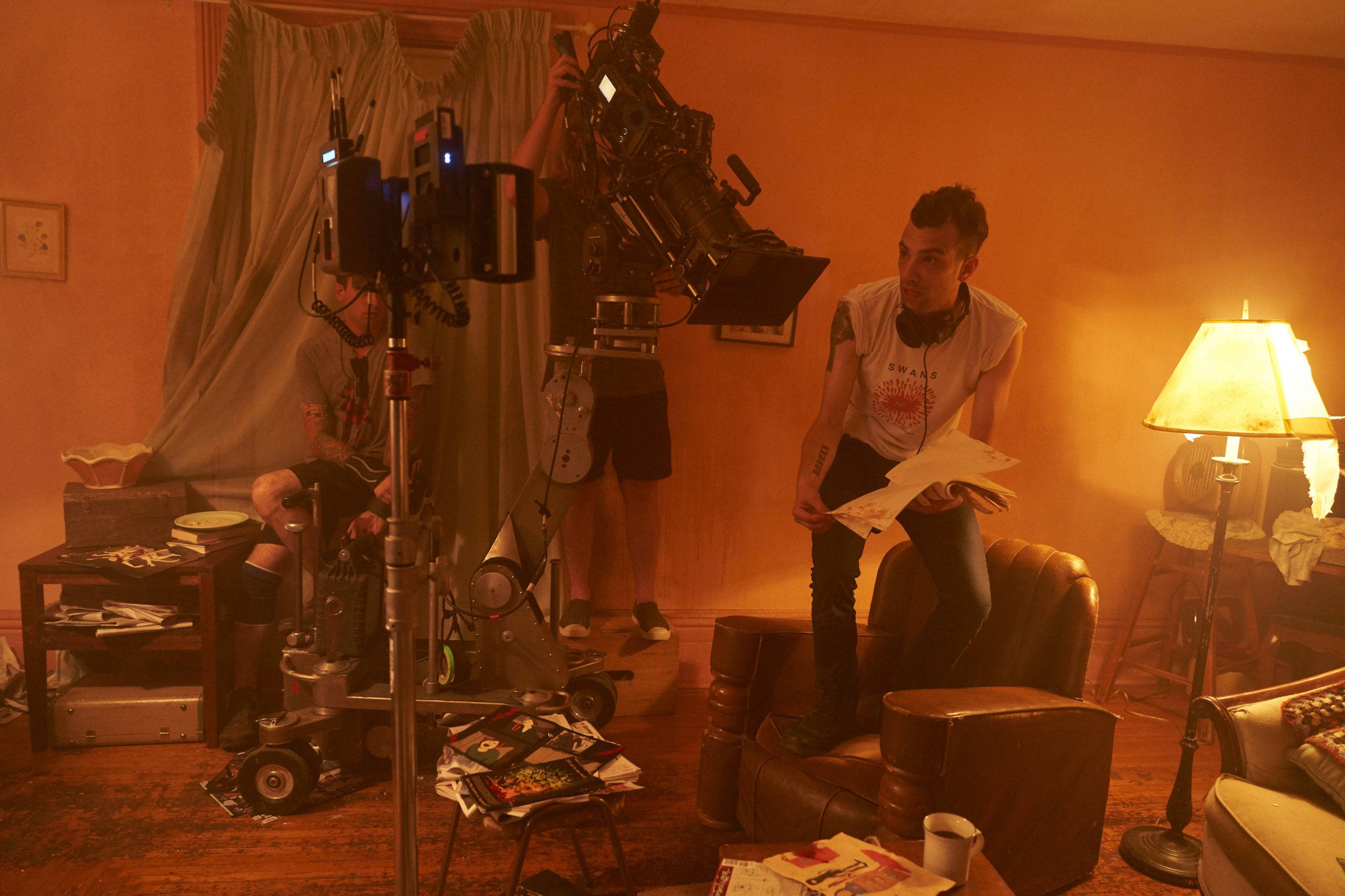
Kelly McNeely: So looping back to the horror genre sort of in general, I know that in the graphic novel, they mentioned that they’re trying to incorporate elements of 70s giallo cinema with the fascination with serial killers. I really like what you did with the character of Kathy, which is making sort of this Michelle McNamara type of character that’s really focused on the victims, and I thought that was such a fantastic concept. What drew you to make that change and what drew you to the project in general?
Jay Baruchel: Yeah, okay, cool. With Kathy — that’s so cool that you said Michelle McNamara, because my wife’s a massive fan of her book. But for me it was actually Ann Rule who for whatever reason does not get her love in true crime — like in in new hipster fucking true crime, no one’s got time for Rule — but she all but invented the fucking genre, and her book about the Green River killer is the hardest thing I’ve ever read. And truly difficult, because — and thank fuck that I read it as a 26 year old man — it hadn’t occurred to me before that I was reading this shit backwards. Or at the very least I was reading it irresponsibly, because her whole thing was for every 10 chapters about a victim, there is one chapter maybe about the killer, and every chapter is a biography that ends with this poor girl getting killed by this guy. And so you read all of these bios in this book that all get to the same fucking end. And it was this big epiphany for me as someone who was a true crime fan since I was a teenager.
And that fucking smashed into this other thing that Stephen King had pointed out when he used to do a column in Fangoria about how slasher movies typically are many things, but they’re not scary. And they’re kind of fucked up. He said, if you can name and sympathize more with Jason and you’re rooting for him to kill those kids, they’re not who the movie’s about. It’s about him. And then what is that experience as an audience member. And those two phenomena, they’re kind of similar.
I think they’re reacting to the deed that the man does as opposed to the thing that people suffered. And I didn’t like that in me, you know? And mercifully though, that realization came to me at a time during which Gníomhartha Foréigin randamacha couldn’t get made, and thank fuck, because we wrote the first draft of the treatment like, eight, nine years ago. And a lot of this shit hadn’t occurred to us yet, and we — Jesse [Chabot] and I — weren’t grown up enough to realize some of this shit.
I’m not trying to say our movie is like, you know, Stalker or Solaris or something, but I’m saying we originally wrote a pretty on-the-nose, what you’d expect kinda slasher flick that played out the same. We treated gore the way you treat a fight scene in a Bond movie, and it was this goal of how crazy can we get, right? Which is such a facile way to get in there, because even if you don’t believe all the kind of bleeding heart shit — but we legitimately do — even if you don’t believe that stuff, outlandish gore is not scary. When a crazy arterial spray fucking decapitation happens to the point where you high five the person next to you, you’re feeling lots of shit, but fear isn’t one of the things you’re feeling.
And so we were like, no matter what, we want to make something truly scary, because if a horror movie fails at everything else, it should succeed at being scary. And what’s scarier than looking at yourself and being disappointed with this man you’re becoming? [laughs] You know, that’s real shit, man. But also we don’t want to be too didactic and tell anybody like “don’t watch fucking Téann Jason go hIfreann”, do whatever the fuck you want just be aware of what you’re putting in.
And also, in addition to that people should be — to what degree is up for debate — but people should be responsible for what they put out into the fucking world. Now, to what degree, that I’m interested in discussing and figuring out and probing and trying to understand, but to pretend that you have zero responsibility is horseshit, I think. And that’s something that a lot of lazy artists have hidden behind is “well no, fuck it, I can say whatever I want”. Well, yes, you can, but what is the sum total of this? What is the cumulative effect of growing up in a world? What are you adding to, what are you taking away from? What role are you perpetuating?
So us getting this tiny movie made — like any movie is a fucking miracle — it died three horrendous deaths before it eventually became a film. And at every time though, every horrendous death, we weren’t satisfied with the script as it was. We were like, well, this is a chance to make it better. We fuckin have nothing but time now, so we might as well keep making it good because how shitty would it be to finally get it made and it was a script that we wrote 10 years ago that we didn’t even fucking agree with anymore, and had acquired dust. So we just treated it like our thesis because we had no fucking choice. We weren’t just going to twiddle our thumbs. And so if the movie wasn’t in production, nobody was giving us money to make it, the least we could do is try to keep making it make sense. And so anyway, that’s how it ended up the way that it is.
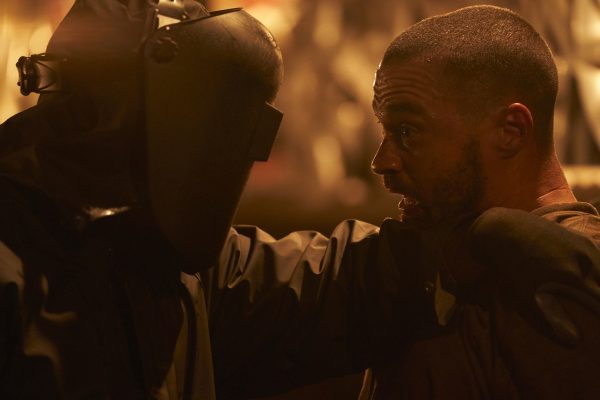
trí Pictiúir Airde
Kelly McNeely: The villain that you have, he’s seen so briefly but he leaves such a strong impression; that actor is fantastic in that role. How do you cast a killer?
Jay Baruchel: Yeah, with great difficulty. We cast him three days before we started shooting, which was like, really stressful, because I had all these amazing elements, but something that is significant in a horror film, especially this kind of horror film, is the killer. And we had two different offers out to two different folks that were like, sure things, who at the 11th hour, bailed. We had that process happen twice.
And all of a sudden, we’re now five prep days away from going to picture and we’re like, okay, we have to start planning for a situation in which we don’t have our killer on the first day of shooting. Okay, well, that’s all right. He’s in a mask, so we can hire a stunt double and get the stunt double in there, because we don’t see his face for the first few times. So, great, we’re gonna hire a stunt double and then and then hire an actor to match the stunt double? Well that’s kind of ass backwards, right? We were just kind of fucked.
And then on the Wednesday or the Thursday of that week, I said to my stunt coordinator Blair [Johannes], I said of all your guys, the guys you go to, who’s the best with dialogue? Who’s the best actor? And if you can tell me those guys, can you ask them if they’re willing to read? Because it’s largely a stunt role anyway, so whoever we cast, it’s going to be the double working more than the actor anyway.
So I’ve looked at every actor in the fucking city, you know, who do you like? And he’s like, okay, I’ve got three guys, one of them is injured so he can’t do it. The other guy, it’s too much for him, there’s too much dialogue, it’s outside his comfort zone. So fair enough, I respect him saying that. And what was nice was Simon Northwood put himself on tape.
And I swear to God, it was the best audition… period. And I’ve gone through two or three rounds of auditions in Toronto, which were national as well, so we’re also seeing Montreal, Vancouver, I was seeing everything. But, two rounds. And on the Thursday night before we start prep, I watch this audition tape. And by the way, if he wasn’t awesome, I was prepared to go that first week without. I would have bought time, we would have moved shit around, right? But he fucking killed it.
Every once in a while, you are aware of destiny. You are aware, you see things; you’re like, oh this is why those two guys that I thought were going to do it didn’t, and this is why nobody — in my opinion — killed it the way they should have killed it. This is why I couldn’t find anybody. This is why those other two stunt performers weren’t available, because it had to be Simon. And now all of a sudden, I don’t have to find a stunt double, now all of a sudden every kill scene gets that much safer because he’s involved in them, and he’s going to make sure my actors are protected. So he’s double shifting in every scene. He’s doing his thing as the killer, but he’s also on the ground to make sure everyone’s okay, which he did constantly.
He was a godsend and you know, one of the things I’m most proud of with this movie is that it makes it seem like I discovered Simon Northwood, because I think like, that’s as good a performance as I’ve seen in any movie in a fucking very long time. He destroys! And this is a guy who, for whatever combination of reasons, has never gotten to say more than “Freeze!” or “Right this way, ma’am” in a movie. He was excited to have something to do, and fuck, he ends up finding shit that I couldn’t have conceived of, which is always the dream when you hire someone.
Kelly McNeely: You switched things, a bit, from the graphic novel to having the characters start up in Canada. But I think the slasher is a very American concept, right. And so having that road trip idea of moving it over into the States, I feel like that really worked well. I wanted to talk a little bit about slashers as an American concept, and how do you build a slasher film?
Jay Baruchel: You’re right, it is a very American art form. And I think it’s like every American art form that is successful. It scratches you in a way. It’s like, a whopper from Burger King does things. I love it. It hits a spot — I know it’s greasy, and I know it’s dirty, and I know it’s chemical, I know it’s a chain, I know all these different reasons why I shouldn’t eat it — but God damn it does something that nothing else does [laughs], it hits a fucking spot, man.
And so I would argue that that genre does the same fucking thing, and for a lot of the same kind of reasons. For me, I think it starts with, you’ve got to give a shit about the people that are gonna get chased, number one, otherwise it’s not a horror movie. Then I’m watching this guy go around and kill people I don’t give a shit about, and that’s something to itself, but it’s not a horror movie to me. So I want to give a shit about them, I want every bad thing that happens to the people that are getting chased to land, I want it to personally affect me as much as humanly possible. I want it to break my heart. And I want to feel that rarest of sensations which is legitimate anxiety from a movie.
It’s so rare for me to get uncomfortable in a flick to the point of like “fuckfuckfuckfuckfuck”, I want nothing more than to feel like there’s someone at my door. I want to be scared to turn around, away from the screen, because I feel like someone’s behind me. And that almost never happens. So I just wanted to scare people. I wanted to make something scary. I think ultimately the answer is — maybe this is a super cheesy answer — but I think the answer is the same as the answer to how do you make something funny? Or how do you write a good song, I think, which is just like, truthfulness, man.
You can accuse our film of different things, but I don’t think you could call it horseshit, I think it’s a pretty honest and earnest film and we approached everything that way. And that includes the violence, that includes our killer/monster, that includes our protagonists. I believe deeply in the genre of horror films. And I don’t think something’s merit is dependent on whether it fulfills or provides a job or something.
Some people will say, why are horror movies successful? There’s plenty of interviews with Wes Craven, opining about how we need to expel or nightmares or whatever the fuck. It’s always that shit, which is true, that’s fine, but like, even if it didn’t fulfill that, I’d still think they’re important because there’s a huge part of us that is scared and scary. In every single one of us. We are scared and we are scary, and we’re scared of ourselves and we know what’s scary about us. We’re also scared of other people, we know what’s scary about them, fear is as defining an element in the human condition as contentment and pain.
I think you just like, go harsh, go real, and give a shit about the people that it’s happening to. And ideally, have the audience in something of an uncomfortable position with the bad guy. I think you should — sympathy and empathy, that I don’t know — but I know that if you can understand or see some piece of you, or have some piece of them resonate with you, that’s the best. That’s the fucking best, if I can complicate it and understand… like I can still want the devil to get out, but understand why it’s picking this priest… That’s the best.
Kelly McNeely: I think it’s great as well, like what you’re talking about with killers, it becomes that you root for the killer — the killer becomes the hero — which is something you address in the script. So I think it’s so important to have that conversation, addressing the fact that there is this glorification of violence in our culture, but at the same time, like… there’s some great violence in our culture! You can really appreciate it, you can dig into it, and it really serves something within us and tickles something that we need. I think there’s a deep, deep need to see that gladiatorial conflict.
Jay Baruchel: Oh, definitely. Definitely. Because we’re born in violence. Yes, it’s a bad thing, and yes, it’s a good thing, but it’s also just a thing!
Kelly McNeely: It just exists!
Jay Baruchel: Yeah! Like, why is red connected to passion universally? It’s because friggin blood is red. And if you see blood, you know something bad has happened. So back in a time when we didn’t have words to articulate why we were scared or where we should go if you saw red, you knew you shouldn’t be there. And I think that we have built houses of cards on top of that. Real ones too, but they’re still just a house of cards at the end. At the end of the day, I still think we are the same animal reacting to that same shit.
For more with Jay Baruchel, stay tuned for our bonus chat on directing, practical effects, and his favourite horror films, and for my full review of Gníomhartha Foréigin randamacha.
Éist leis an ‘Eye On Horror Podcast’
Leathanaigh: 1 2

Scannáin
Scannán Eile Creepy Spider Buaileann Sudder an mhí seo
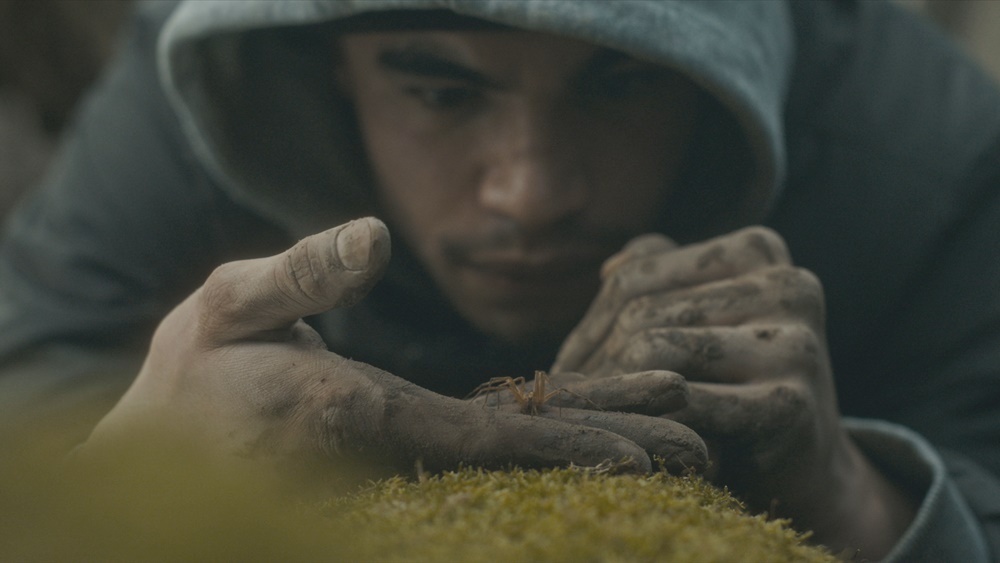
Tá scannáin mhaithe damháin alla mar théama i mbliana. Ar dtús, bhí againn Sting agus ansin bhí Infested. Tá an chéad cheann fós in amharclanna agus tá an dara ceann ag teacht Shudder ag tosú aibreán 26.
Infested tá roinnt léirmheasanna maith á fháil aige. Tá daoine ag rá nach amháin gur gné iontach créatúr é ach tráchtaireacht shóisialta ar chiníochas sa Fhrainc freisin.
De réir IMDb: Bhí an scríbhneoir/stiúrthóir Sébastien Vanicek ag lorg smaointe maidir leis an leatrom a bhíonn le sárú ag daoine dubha agus Arabacha sa Fhrainc, agus ba é an toradh a bhí air ná damháin alla, nach mbíonn fáilte rompu go minic i dtithe; aon uair a fheictear iad, bíonn siad swatted. Toisc go gcaitheann an tsochaí le gach duine sa scéal (daoine agus damháin alla), tháinig an teideal chuige go nádúrtha.
Shudder tar éis éirí an caighdeán óir le haghaidh sruthú ábhar uafáis. Ó 2016, tá an tseirbhís ag tairiscint leabharlann leathan de scannáin seánra do lucht leanúna. in 2017, thosaigh siad ag sruthú ábhar eisiach.
Ó shin i leith tá Shudder ina chumhachtaí sa chiorcad féile scannán, ag ceannach cearta dáileacháin do scannáin, nó ag táirgeadh cuid dá gcuid féin. Díreach cosúil le Netflix, tugann siad turas gearr amharclainne do scannán sula gcuireann siad lena leabharlann é do shíntiúsóirí amháin.
Oíche Déanach Leis an Diabhal Is sampla iontach é. Eisíodh go hamharclannach é ar 22 Márta agus cuirfear tús le sruthú ar an ardán ag tosú 19 Aibreán.
Cé nach bhfuil ag fáil an buzz céanna le Oíche Déanach, Infested Is fearr leat an fhéile agus tá sé ráite ag go leor má tá tú ag fulaingt ó arachnophobia, b’fhéidir gur mhaith leat a bheith cúramach sula mbreathnaíonn tú air.
De réir an achoimre, tá ár bpríomhcharachtar, Kalib ag casadh 30 agus ag déileáil le roinnt saincheisteanna teaghlaigh. “Tá sé ag troid lena dheirfiúr mar gheall ar oidhreacht agus tá nasc gearrtha aige lena chara is fearr. Bíonn spéis ag ainmhithe coimhthíocha air, agus aimsíonn sé damhán alla nimhneach i siopa agus tugann sé ar ais go dtí a árasán é. Ní thógann sé ach nóiméad ar an damhán alla éalú agus atáirgeadh, ag iompú an fhoirgnimh ar fad isteach i gaiste gréasáin uafásach. Is é an t-aon rogha atá ag Kaleb agus a chairde ná bealach a fháil amach agus maireachtáil.”
Beidh an scannán ar fáil le féachaint ar Shudder ag tosú aibreán 26.
Éist leis an ‘Eye On Horror Podcast’
Scannáin
Páirt-Ceolchoirm, Scannán Uafáis Páirt M. Oíche Eisithe Leantóir 'Gaiste' Shyamalan
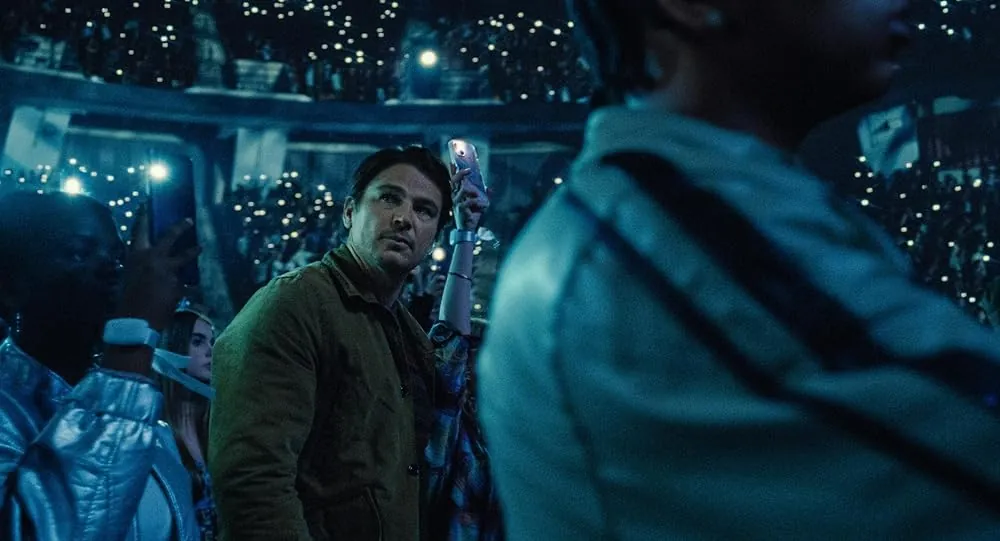
I bhfíor shiamalainn foirm, leagann sé a scannán Gaiste laistigh de chás sóisialta nuair nach bhfuilimid cinnte cad atá ar siúl. Tá súil agam go bhfuil casadh ann ag an deireadh. Ina theannta sin, tá súil againn go mbeidh sé níos fearr ná an ceann ina scannán deighilteach 2021 Sean.
Is cosúil go dtugann an leantóir go leor ar shiúl, ach, mar a bhí roimhe seo, ní féidir leat brath ar a leantóirí mar is minic gur scadáin dearga iad agus go bhfuil tú á lasadh chun smaoineamh ar bhealach áirithe. Mar shampla, a scannán Knock ag an gCábán go hiomlán difriúil ón méid a bhí le tuiscint sa leantóir agus mura raibh an leabhar ar a bhfuil an scannán bunaithe léite agat bhí sé fós cosúil le bheith dall.
An plota le haghaidh Gaiste “taithí” a thugtar air agus nílimid lánchinnte cad is brí leis sin. Más rud é go raibh muid chun buille faoi thuairim bunaithe ar an leantóir, tá sé ina scannán ceolchoirme fillte thart ar rúndiamhair uafáis. Tá amhráin bhunaidh léirithe ag Saleka, a imríonn Lady Raven, cineál hibrideach Taylor Swift/Lady Gaga. Tá siad tar éis fiú a Láithreán gréasáin lady Ravene chun an seachmaill a chur chun cinn.
Seo é an leantóir úr:
De réir na hachoimre, tugann athair a iníon chuig ceann de cheolchoirmeacha lán le suibhe Lady Raven, “nuair a thuigeann siad go bhfuil siad i lár imeacht dorcha agus sinister”.
Scríofa agus stiúrtha ag M. Night Shyamalan, Gaiste na réaltaí Josh Hartnett, Ariel Donoghue, Saleka Shyamalan, Hayley Mills agus Allison Pill. Tá an scannán arna dtáirgeadh ag Ashwin Rajan, Marc Bienstock agus M. Night Shyamalan. Is é Steven Schneider an léiritheoir feidhmiúcháin.
Éist leis an ‘Eye On Horror Podcast’
Nuacht
Tugann Bean Corp Sa Bhanc Chun Páipéir Iasachta a Shíniú

Rabhadh: Is scéal corraitheach é seo.
Caithfidh tú a bheith sách éadóchasach ar airgead leis an rud a rinne an bhean Brasaíleach seo sa bhanc chun iasacht a fháil. Chuaigh sí isteach i gcorp úr chun an conradh a fhormhuiniú agus cheap sí de réir dealraimh nach dtabharfadh fostaithe an bhainc faoi deara. Rinne siad.
Tagann an scéal aisteach suaite seo via ScreenGeek foilseachán digiteach siamsaíochta. Scríobhann siad gur bhrúigh bean a d’aithin Erika de Souza Vieira Nunes fear a d’aithin sí mar uncail di isteach sa bhanc ag pléadáil leis páipéir iasachta a shíniú ar $3,400.
Má tá tú squeamish nó má tá tú spreagtha go héasca, tabhair faoi deara go bhfuil an físeán a gabhadh den scéal ag cur isteach ort.
Thuairiscigh an líonra tráchtála is mó i Meiriceá Laidineach, TV Globo, an choir, agus de réir ScreenGeek is é seo a deir Nunes sa Phortaingéil le linn an idirbhirt iarracht.
“A Uncail, an bhfuil tú ag tabhairt aird? Caithfidh tú [an conradh iasachta] a shíniú. Mura síníonn tú, níl aon bhealach, mar ní féidir liom síniú ar do shon!"
Deir sí ansin: “Sínigh ionas gur féidir leat a thuilleadh tinneas cinn a spáráil dom; Ní féidir liom é a fhulaingt a thuilleadh.”
Ar dtús cheapamar go bhféadfadh sé seo a bheith ina hoax, ach de réir póilíní na Brasaíle, fuair an uncail, Paulo Roberto Braga, 68 bliain d'aois bás níos luaithe an lá sin.
“Rinne sí iarracht síniú a fháil don iasacht. Chuaigh sé isteach sa bhanc marbh cheana féin,” a dúirt an Príomhfheidhmeannach Póilíní Fábio Luiz in agallamh leis TV Globo. “Is é an tosaíocht atá againn ná leanúint den imscrúdú chun baill eile den teaghlach a aithint agus tuilleadh eolais a bhailiú maidir leis an iasacht seo.”
Má chiontaítear Nunes d'fhéadfadh sé a bheith os comhair am príosúin ar chúisimh calaoise, embezzlement, agus desecration corp.
Éist leis an ‘Eye On Horror Podcast’
-

 LeantóiríLá ó shin 7
LeantóiríLá ó shin 7Féach ar an leantóir le haghaidh 'Under Paris,' an scannán a bhfuil daoine ag glaoch 'French Jaws' [Leantóir]
-

 NuachtLá ó shin 3
NuachtLá ó shin 3Chuir an Scannán Uafásach seo Taifead a bhí i seilbh 'Train to Busan'
-
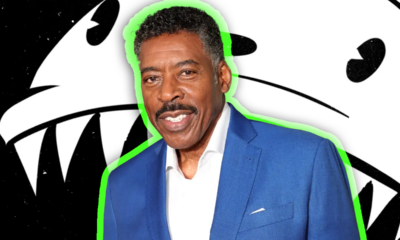
 ScannáinLá ó shin 7
ScannáinLá ó shin 7Ernie Hudson le Réalta in 'Oswald: Down The Rabbit Hole'
-
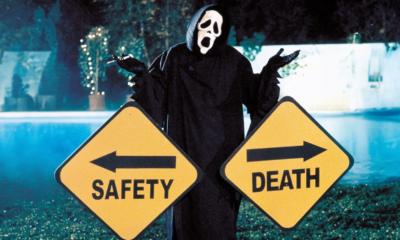
 NuachtLá ó shin 7
NuachtLá ó shin 7Paramount agus Foireann Miramax Suas chun an Toghchóras “Scary Movie” a atosú
-

 ScannáinLá ó shin 3
ScannáinLá ó shin 3Féach ar 'gan Smál' Sa Bhaile Faoi láthair
-

 NuachtLá ó shin 4
NuachtLá ó shin 4Léigh Léirmheasanna Do 'Abigail' Is Déanaí Ó Tost Raidió
-

 EagarthóireachtaLá ó shin 4
EagarthóireachtaLá ó shin 4Bhí tús stiúrthóir Rob Zombie beagnach 'The Crow 3'
-

 NuachtLá ó shin 4
NuachtLá ó shin 4Deir Melissa Barrera nár áiríodh Tríú Scannán riamh ina conradh 'Scream'




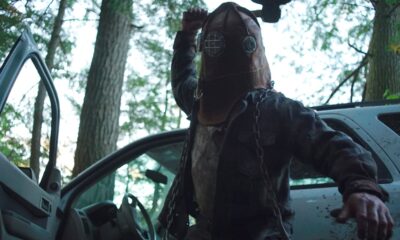




















Ní mór duit a bheith logáilte isteach chun nóta tráchta a phostáil Lógáil Isteach